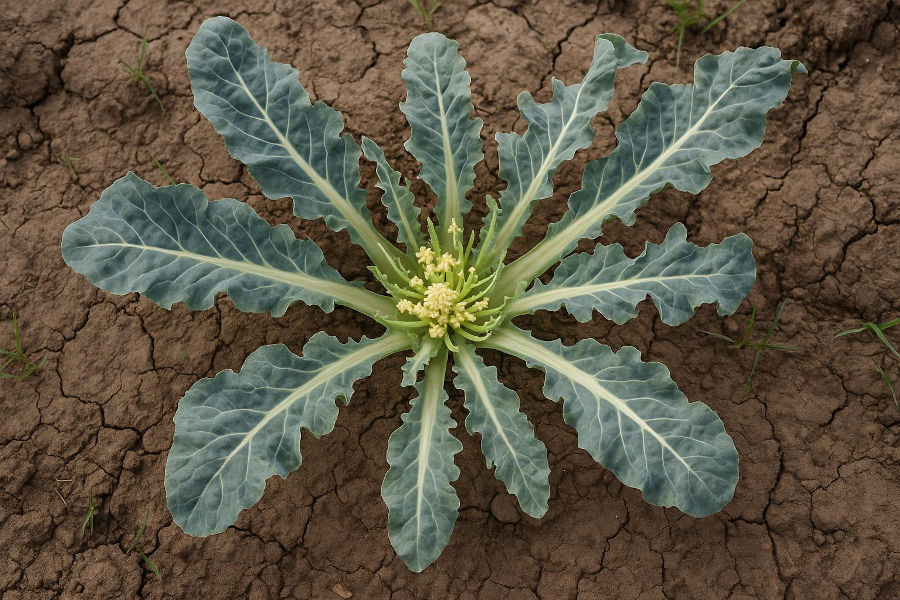Whiptail in Cauliflower: Causes, Symptoms, and Management
Introduction
Whiptail is a common physiological disorder in cauliflower that severely affects curd development and crop yield. Understanding its cause and proper management is crucial for successful cauliflower farming.
1. What is Whiptail?
Whiptail is a nutrient disorder in cauliflower characterized by narrow, distorted, strap-like leaves and poor curd formation.
2. Main Cause
-
Molybdenum Deficiency is the primary cause of whiptail.
-
It often occurs in acidic soils (pH below 5.5) where molybdenum availability is low.
3. Symptoms of Whiptail
-
Young leaves become thin, strap-like, and deformed.
-
Leaves lack proper lamina (leaf blade).
-
Severely affected plants fail to form proper curds.
-
Overall stunted growth and poor yield.
4. Conditions Favoring Whiptail
-
Acidic and sandy soils.
-
High rainfall areas (leaches molybdenum).
-
Imbalanced fertilizer use.
5. Management Practices
-
Soil pH Correction: Apply lime to raise soil pH to 6.5–7.0.
-
Molybdenum Application:
-
Use Sodium Molybdate or Ammonium Molybdate at 0.1% as a foliar spray.
-
Apply 1–1.5 kg/ha molybdenum in soil before planting.
-
-
Balanced Fertilizer Use: Ensure all micronutrients are applied based on soil testing.
-
Avoid Over-Irrigation: Prevent molybdenum leaching in light soils.
6. Preventive Measures
-
Regular soil testing for pH and micronutrient levels.
-
Use molybdenum-coated fertilizers if available.
-
Choose resistant or tolerant varieties where possible.
